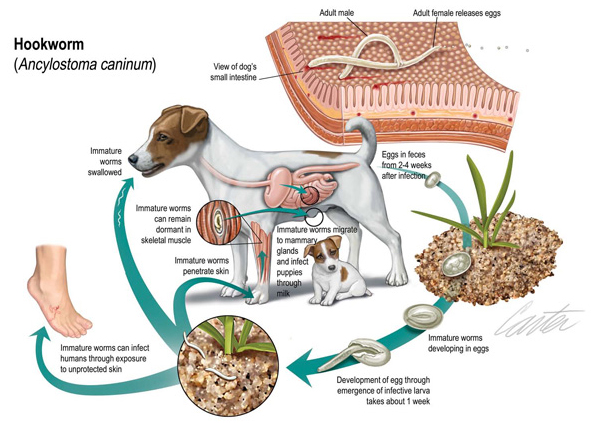Hookworms
Hookworms in dogs, are scientifically known as “Ancylostoma caninum" or “Ancylostoma braziliense," are intestinal parasites that literally hook themselves into the lining of your dog’s intestines. They have a hook-like mouthpiece which is used to attach themselves to the intestinal wall and to feed off of the tiny blood vessels in the intestinal lining. Despite their small size, only 3 millimeters in length, left unchecked, can lead to severe anemia in a dog.
The life cycle of the hookworm has three stages: egg, larvae, and adult. The microscopic eggs pass through the feces, where they hatch into larvae and contaminate the environment. The larvae can survive for weeks or even months outdoors before infecting your dog. The larvae then migrate through the dog’s body until they come to the intestine, where they mature into adults and lay eggs, perpetuating the cycle.
How does my dog get Hookworms?
There are four ways dogs can get this nasty parasite:
- Oral ingestion (feces, contaminated food, water or soil)
- Direct contact with the skin
- In utero
- From the mother's milk
Dogs accidentally ingest the larvae by sniffing or eating contaminated soil or feces. They can also ingest larvae by licking their paws or by drinking contaminated water. The larvae can even burrow into the skin of dogs if the dog lies on contaminated soil.
The pup's monther can also pass along hookworms. The larvae infect the puppies either in the uterus or through the bitch’s milk when the puppies nurse. This is concerning, as hookworms can lead to severe anemia in puppies, which can be fatal. This is an important reason why the breeder should worm the puppies before going to their new homes.





